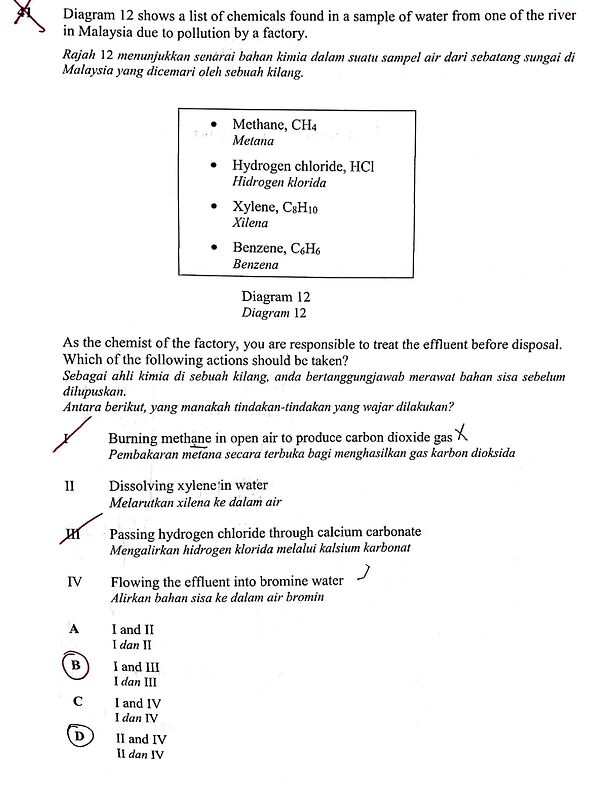Let’s do elimination of options.
I. Burning methane involves: CH4 + 2O2 → CO2 + 2H2O. While CO2 is a greenhouse gas, it is relatively common for chemical plants to flare organic compounds and sent the CO2 emissions to the air, instead of keeping the methane as a volatile organic compound.
II. Since xylene is an organic compound, it cannot be dissolved in water (will form two layers). Therefore, option II should not be considered (Eliminate A and D)
III. Passing HCl through calcium carbonate. Since HCl is acidic (in aqueous form), reacting it with CaCO3 involves CaCO3 + 2HCl → CaCl2 + CO2 + H2O, whereby relatively harmless products are produced.
IV. Flowing the effluent into bromine water - Doesn’t really solve anything, as the bromine water containing the effluents cannot be simply discharged and have to be treated again.
Therefore, answer is B. I and III
Ouhhh…Thank you very much! 



